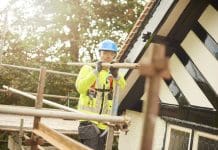Dr Graham Couchman, CEO of the Steel Construction Institute details the evolution of Eurocodes and what they mean for today’s practitioners…
The lineage of international collaboration of organisations that has led to the current Eurocodes can be traced back to the 1950s. This history is well explained in an excellent article by Prof Roger Johnson of Warwick University published some years ago in the Proceedings of the Institution of Civil Engineers. The article has a subtitle of ‘why 40 years’, the answer to which lies in some of the details given by Prof Johnson. For example, in the early 1970s the Joint Committee on Composite Structures (JCCS) began preparing a technical document that could act as a basis for international codes on composite (steel-concrete) structures. Progress was slow. Its initial convention was that contributors could speak and write in English, French or German, which presumably was not conducive to speed. As well as taking time, this led to much input from multilingual academics!
Skipping forward 20 years, by the start of 1990 the development of the Eurocodes had been put under the direction of the Comité Européen Normalisation (CEN), whose remit had previously only included standards for products and testing. This was logical, as the Treaty of Rome (1957) had an aim to remove barriers to trade, and both product standards and design codes were deemed to be barriers. Working documents, called ENV drafts, for the major construction materials appeared in the early 1990s. The hope was that these would be used by industry and feedback given to inform the final EN documents, scheduled to appear some time later. Unfortunately not much practical feedback was given (perhaps hard pressed industry felt it had better things to do), and it took more than another decade to write these documents.
Finally, in March 2010, national standards bodies (such as BSI) were required to withdraw the preceding national codes and standards. It is worth noting that in a regulatory environment such as the UK, this did not mean the old standards could no longer be used for an awful lot of designs.
What is happening now?
Although still far from being used for all designs in the UK, the Eurocodes have nevertheless gained much momentum in the past five years or so. This means that the early 1990s aim of having codes that were used by practitioners, who might therefore be able to give valuable feedback, has been achieved. After a number of years of careful planning, a process that will enable this feedback to be considered and reflected is now beginning in earnest.
During 2014, so called ‘systematic reviews’ were undertaken on a number of Eurocode parts. More will follow. Although it remains almost impossible to persuade most practitioners to give up time to comment (because the rewards from doing so will lie some years in the future), this review has produced some valuable feedback. At the same time funding has been secured to allow an evolution of the Eurocodes. One of the, if not the primary aims of this evolution is to improve the ease of use of the codes. In this context ‘ease’ is multifaceted, and some of those facets are mutually contradictory, but the intent is clearly good and sensible.
When revised Eurocodes appear around 2020, users should find they better cover common practice, they will contain fewer alternative methods, they are easier to navigate around, and there are fewer inconsistencies between them. Mistakes will hopefully be corrected, ambiguities clarified, and a number of other changes made to improve use. This will all be done within another aim to avoid fundamental change unless it is really necessary (an example might be retaining the current numerous parts of Eurocode 3). The use of ‘Eurocode English’ looks set to persist!
Why am I telling you this?
My own organisation, SCI, has over 400 member companies who are active in the design and execution (to use a good Eurocode word) of steel and composite structures. Through our technical advisory service we know the problems that practitioners can have when codes are unclear, sometimes incorrect, or lacking in detail or scope. I and a number of my colleagues are active in code development, but there is a limit to what can be achieved, so help is always welcome. Achieving the right result is not always possible – we no longer have to attend meetings run in three languages, but we do have to reach agreement between many interested parties with often fundamentally different philosophies and regulatory systems to satisfy.
Finally, I would encourage all code users to recognise that codes do not contain ‘absolute truths’. They contain the best knowledge that was available at the time, sometimes (necessarily) interpreted with a level of subjectivity by those writing the rules. Users of design codes should never blindly trust, even when something has taken 40 years to develop and is pan-national, but rather assure themselves that what they are doing is within what they feel the rule writers would have envisaged. ■
. . . . . . . . . . . . . . . . . . . . . . . . . . . . . . . . . . . . . . . . . . . . . . .
Dr Graham Couchman
CEO, Steel Construction Institute, and Chairman of CEN committee CEN\TC250\SC4 Composite Construction
Steel Construction Institute
Tel: +44 (0)1344 636525













